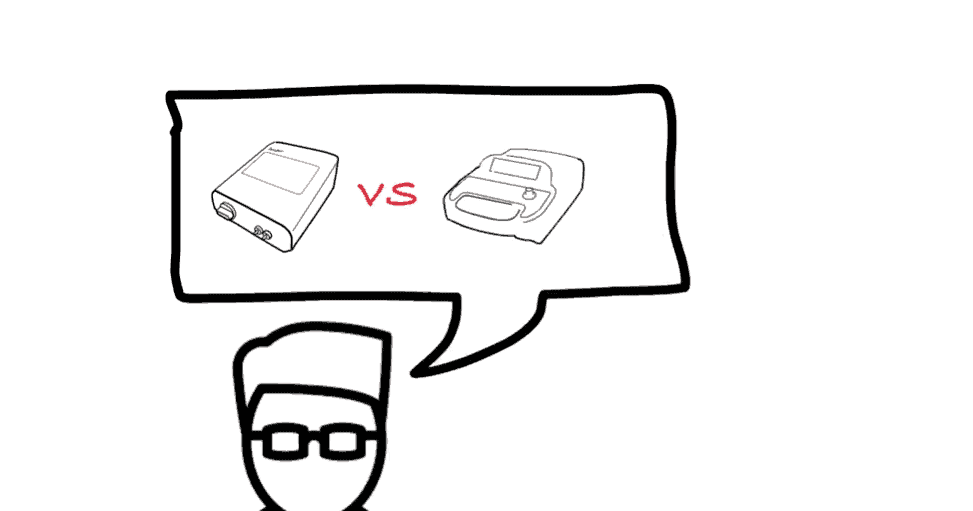Questions? Get a Quick Response
Questions? Get a Quick Response
Respirator fit testing is becoming more important all the time. There are currently two commonly-used methods for performing quantitative fit testing: Condensation Nuclei Counting (CNC) and Controlled Negative Pressure (CNP). So, what’s the difference?
By far, the most widely used method is the ambient aerosol method using CNC. This test is done by challenging the seal of the respirator with naturally occurring, ultrafine particulates. The extremely low-mass characteristic of these particulates mimics gas molecules.
The CNP method pulls a slight negative pressure inside the mask and then maintains that in-mask negative pressure for about ten seconds by pumping air out of the respirator breathing zone. The amount of air that was pumped out of the respirator breathing zone to maintain the slight negative pressure is measured by the system and is equivalent to the amount of air that leaked into the respirator. This is then mathematically massaged to produce an equivalency to the Fit Factor.
While both methods are approved by OSHA and are in use today, they are not created equal. So which method is better for your respirator fit testing needs?
When comparing these methods, it’s best to examine the pros and cons of how each method is carried out, what factors may impact the results, and how accurate and repeatable those results are likely to be.
The CNC testing system measures the concentration of ultrafine particulates in the ambient atmosphere and then measures the concentration of these ultrafines, (a.k.a. respirable particulates) in the breathing zone of the respirator while the test subject is actually moving and breathing. There are several exercises in the protocol which are designed to stress the seal, and the most important thing to consider is that the measurement of the challenge agent is performed dynamically.
Basically, the ratio of in-mask particulate concentration to ambient particulate concentration becomes the “Fit Factor”, which is a direct measure of how well the respirator actually fits. And because these particulates are non-toxic (typically naturally-occurring or a generated aerosol such as sodium chloride or calcium carbonate) they are perfect for use as the challenge agent in these tests.
Finally, and perhaps most importantly, the CNC method can be used with disposable filtering facemask respirators like the N95, whereas the CNC method cannot.
The original protocol for the OSHA-mandated fit test required about 8 minutes. For several years, the CNP method used a shorter protocol (Redon Procedure). However, in 2019 OSHA approved a Fast CNC protocol that is actually slightly shorter in duration than the CNP methods (about 2 ½ minutes).
For several years there was a CNP protocol that required less time to perform in the hands of a very skilled test administrator. This advantage has been made moot by the introduction of the 2019 Fast OSHA protocols.
While theoretically sound, there is a major flaw to this testing method. That is the human element. If the test subject is breathing or moving, this affects the pressure in the mask breathing zone and can fool the pressure transducer, rendering the results null and void.
So the test subject has to hold his or her breath while the leak rate is measured., and furthermore, the test subject cannot move at all or the pressure will change slightly and the system will interpret that change as a leak.
Since people move and breathe when using their respirators on the job, this testing method is not a good correlation to actual use. Even if a test subject manages not to skew the measurements, this testing method is hard to trust as the seal on a respirator is challenged much more when the wearer is active than when they are still.
Since OSHA adopted the newest Fast Fit Testing Protocols, the biggest con for CNC testing has been eliminated.
With more reliable results, better correlation to real-world application, and fewer ways to skew the results, CNC fit testing methods are still the best quantitative fit testing method available.
Keep your employees safe using the newest and best CNC quantitative fit testing methods and equipment from Accutec.

Customer Service
info@accutec.com
(866) 393-2405 toll-free
Global Distribution & Service Center
201 S. Miami Ave
Cleves, OH 45002
Get the Latest News from AccuTec Right in Your Inbox.